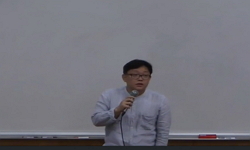기업규모 대비 발생액이 낮은 기업들의 미래 주식수익률이 발생액이 높은 기업들보다 유의하게 높게 나타난다는 발생액 이상현상의 원인과 관련하여 본 연구에서는 발생액 이상현상이 투...
http://chineseinput.net/에서 pinyin(병음)방식으로 중국어를 변환할 수 있습니다.
변환된 중국어를 복사하여 사용하시면 됩니다.
- 中文 을 입력하시려면 zhongwen을 입력하시고 space를누르시면됩니다.
- 北京 을 입력하시려면 beijing을 입력하시고 space를 누르시면 됩니다.
https://www.riss.kr/link?id=A103374452
- 저자
- 발행기관
- 학술지명
- 권호사항
-
발행연도
2009
-
작성언어
Korean
- 주제어
-
KDC
32
-
등재정보
KCI등재,SCOPUS
-
자료형태
학술저널
- 발행기관 URL
-
수록면
77-105(29쪽)
-
KCI 피인용횟수
13
- 제공처
-
0
상세조회 -
0
다운로드
부가정보
국문 초록 (Abstract)
기업규모 대비 발생액이 낮은 기업들의 미래 주식수익률이 발생액이 높은 기업들보다 유의하게 높게 나타난다는 발생액 이상현상의 원인과 관련하여 본 연구에서는 발생액 이상현상이 투자자들의 차익거래위험이나 거래비용과 같은 장애요인에 기인하는 것인지를 검증하고 있다. 1987년부터 2006년까지 한국증권선물거래소의 유가증권시장에 상장된 국내 비금융업 기업들을 대상으로 실증 분석한 결과, 발생액이 낮았던 기업들의 주식을 매수하고 높았던 기업들의 주식을 매도하여 구성한 발생액 헤지포트폴리오가 연평균 14~17%의 높은 초과수익률을 제공하는 것으로 나타났다. 또한 기업고유위험으로 측정한 차익거래위험이 높은 주식들로 구성한 발생액 헤지포트폴리오가 연평균 23~28%의 유의한 양의 초과수익률을 얻는 것으로 나타나서 발생액 이상현상이 차익거래위험이 높은 주식들에 집중되는 것으로 분석되었다. 그리고 주식가격이 낮아서 거래비용이 높은 주식들로 구성한 발생액 헤지포트폴리오 역시 다른 그룹들보다 높은 연평균 21~24%의 초과수익률을 얻는 것으로 나타났다. 그러나 주식가격 이외의 다른 거래비용 대용치들을 이용한 결과에서는 발생액 이상현상이 집중되는 결과를 얻지 못함으로써, 거래비용이 발생액 이상현상에 미치는 효과는 차익거래위험보다 덜 체계적이라는 결과를 얻었다. 이러한 연구 결과는 발생액 이상현상이 시장비효율성에 전적으로 기인한다고 보기 보다는 차익거래기회를 제한하는 시장미시구조적 장애요인들에 의해서도 발생되고 있음을 시사하고 있다.
다국어 초록 (Multilingual Abstract)
This paper examines whether the accrual anomaly, initially proposed by Sloan(1996), can be caused by market microstructural obstacles such as arbitrage risks and transaction costs that risk-averse investors confront in implementing arbitrage transacti...
This paper examines whether the accrual anomaly, initially proposed by Sloan(1996), can be caused by market microstructural obstacles such as arbitrage risks and transaction costs that risk-averse investors confront in implementing arbitrage transactions. Empirical results of this paper confirm the presence of the accrual anomaly in the Korean stock market over the period from 1987 to 2006. We find that the accrual hedge portfolio constructed by buying the lowest accrual stocks and selling the highest accrual stocks earns 14%~17% abnormal returns p.a., on average. We also find the accrual anomaly is concentrated in the sample stocks with high arbitrage risks and high transaction costs. For example, the accrual hedge portfolio constructed from the sample stocks with high idiosyncratic volatility earns the highest abnormal returns about 23%~28% p.a., and the accrual hedge portfolio constructed from those with low stock prices (or high transaction costs) earns the highest abnormal returns about 21%~24% p.a. However, in the case of other proxies for the transaction costs, such as trading amount, market capitalization, or Amihud`s (2002) illiquidity measures, we cannot find the evidence that the accrual anomaly is concentrated in stocks with high transaction costs. This indicates that the transaction costs affect the accrual anomaly less systematically than the arbitrage risks. These results of this paper imply that the accrual anomaly can be largely attributable to market microstructural obstacles which limit the arbitrage opportunities, but not entirely attributable to market inefficiency.
참고문헌 (Reference)
1 손병철, "발생액의 효율적 평가에 영향을 미치는 요인" 30 (30): 59-91, 2005
2 고봉찬, "발생액 이상현상에 대한 위험평가" 한국증권학회 36 (36): 425-461, 2007
3 Mashruwala, Christina, "Why is the Accrual Anomaly not Arbitraged away? The Role of Idiosyncratic Risk and Transaction Costs" 42 : 3-33, 2006
4 Basu, Sudipta, "What Do We Learn from Two New Accounting-Based Stock Market Anomalies?" 38 (38): 333-348, 2004
5 Desai, Hemang, "Value- Glamour and Accruals Mispricing: One Anomaly or Two?" 79 (79): 355-386, 2004
6 Xie, Hong, "The Mispricing of Abnormal Accruals" 76 (76): 357-373, 2001
7 Bhardwaj, Ravinder K, "The January Anomaly: Effects of Low Share Price, Transaction Costs and Bid-Asked Bias" 47 (47): 552-576, 1992
8 Hirshleifer, "The Accrual Anomaly: Risk or Mispricing?"
9 Pincus, Morton, "The Accrual Anomaly: International Evidence, Working Paper, University of California. Pontiff, Jeffrey, 1996, Costly Arbitrage: Evidence from Closed-End Funds" 111 (111): 1135-1152, 1996
10 Fama, Eugene F, "Risk, Return and Equilibrium: Empirical Tests" 81 (81): 607-636, 1973
1 손병철, "발생액의 효율적 평가에 영향을 미치는 요인" 30 (30): 59-91, 2005
2 고봉찬, "발생액 이상현상에 대한 위험평가" 한국증권학회 36 (36): 425-461, 2007
3 Mashruwala, Christina, "Why is the Accrual Anomaly not Arbitraged away? The Role of Idiosyncratic Risk and Transaction Costs" 42 : 3-33, 2006
4 Basu, Sudipta, "What Do We Learn from Two New Accounting-Based Stock Market Anomalies?" 38 (38): 333-348, 2004
5 Desai, Hemang, "Value- Glamour and Accruals Mispricing: One Anomaly or Two?" 79 (79): 355-386, 2004
6 Xie, Hong, "The Mispricing of Abnormal Accruals" 76 (76): 357-373, 2001
7 Bhardwaj, Ravinder K, "The January Anomaly: Effects of Low Share Price, Transaction Costs and Bid-Asked Bias" 47 (47): 552-576, 1992
8 Hirshleifer, "The Accrual Anomaly: Risk or Mispricing?"
9 Pincus, Morton, "The Accrual Anomaly: International Evidence, Working Paper, University of California. Pontiff, Jeffrey, 1996, Costly Arbitrage: Evidence from Closed-End Funds" 111 (111): 1135-1152, 1996
10 Fama, Eugene F, "Risk, Return and Equilibrium: Empirical Tests" 81 (81): 607-636, 1973
11 Ball, Ray, S, "Problems in Measuring Portfolio Performance: An Application to Contrarian Investment Strategies" 38 (38): 79-107, 1995
12 Zhang, Yinglei, "Net Operating Assets as Predictor of Future Stock Returns:An Industry Analysis"
13 Daniel, Kent, "Measuring Mutual Fund Performance with Characteristic-Based Benchmarks" 52 (52): 1035-1058, 1997
14 Thomas, Jacob K, "Inventory Changes and Future Returns" 7 (7): 163-187, 2002
15 Amihud, Yakov, "Illiquidity and Stock Returns: Cross-Section and Time- Series Effects" 5 (5): 31-56, 2002
16 Zach, Tzachi, "Evaluating the ‘Accrual-fixation’ Hypothesis as an Explanation for the Accrual Anomaly"
17 Hribar, Paul, "Errors in Estimating Accruals: Implications for Empirical Research" 40 (40): 105-134, 2002
18 Collins, Daniel W, "Earnings-Based and Accrual-Based Market Anomalies: One Effect or Two?" 29 (29): 101-123, 2000
19 Teoh, Siew H, "Earnings Management and the Underperformance of Seasoned Equity Offerings" 50 (50): 63-99, 1998b
20 Teoh, Siew H, "Earnings Management and the Long Run Market Performance of the Initial Public Offering" 53 (53): 1935-1974, 1998a
21 DeBondt, Werner F. M, "Does the Stock Market Overreact?" 40 (40): 793-805, 1995
22 Wurgler, Jeffrey, "Does Arbitrage Flatten Demand Curves for Stocks?" 75 (75): 583-608, 2002
23 Sloan, Richard G, "Do Stock Prices Fully Reflect Information in Accruals and Cash Flows about Future Earnings?" 71 (71): 289-315, 1996
24 Hirshleifer, David, "Do Investors Overvalue Firms with Bloated Balance Sheets?" 38 : 297-331, 2004
25 Ng, Jeffrey, "Distress Risk Information in Accruals"
26 Fama, Eugene F, "Common Risk Factors in the Returns on Stocks and Bonds" 33 (33): 3-56, 1993
27 Khan, Mozaffar, "Are Accruals Really Mispriced? Evidence from Tests of an Intertemporal Capital Asset Pricing Model"
28 Bhushan, Ravi, "An Informational Efficiency Perspective on the Post- Earnings Announcement Drift" 18 (18): 45-66, 1994
29 Fairfield, Patricia M, "Accrued Earnings and Growth: Implications for Future Profitability and Market Mispricing" 78 (78): 353-371, 2003
30 Hardouvelis, Gikas, "Accruals, Net Stock Issues and Value-Glamour Anomalies: New Evidence on their Relation"
31 Zhang, Frank X., "Accruals, Investment, and the Accrual Anomaly"
32 Newey, Whitney K, "A Simple, Positive Semi-Definite,Heteroskedasticity and Autocorrelation Consistent Covariance Matrix" 55 (55): 703-708, 1987
동일학술지(권/호) 다른 논문
-
- 한국증권학회
- 이원흠(Won Heum Lee)
- 2009
- KCI등재,SCOPUS
-
- 한국증권학회
- 원종현(Chong Hyun Won)
- 2009
- KCI등재,SCOPUS
-
- 한국증권학회
- 이재화(Jae Hwa Lee)
- 2009
- KCI등재,SCOPUS
-
서브프라임사태 이전과 이후의 통화안전성의 변화에 관한 연구
- 한국증권학회
- 김규형(Kyu Hyong Kim)
- 2009
- KCI등재,SCOPUS
분석정보
인용정보 인용지수 설명보기
학술지 이력
| 연월일 | 이력구분 | 이력상세 | 등재구분 |
|---|---|---|---|
| 2026 | 평가예정 | 재인증평가 신청대상 (재인증) | |
| 2020-01-01 | 평가 | 등재학술지 유지 (재인증) |  |
| 2017-01-01 | 평가 | 등재학술지 유지 (계속평가) |  |
| 2013-01-01 | 평가 | 등재학술지 유지 (등재유지) |  |
| 2010-06-28 | 학술지명변경 | 외국어명 : Korean Journal of Financial Studies -> Korean Journal of Financial Studies |  |
| 2010-01-01 | 평가 | 등재학술지 유지 (등재유지) |  |
| 2009-01-01 | 평가 | 학술지 분리 (기타) |  |
학술지 인용정보
| 기준연도 | WOS-KCI 통합IF(2년) | KCIF(2년) | KCIF(3년) |
|---|---|---|---|
| 2016 | 1.06 | 1.06 | 0.98 |
| KCIF(4년) | KCIF(5년) | 중심성지수(3년) | 즉시성지수 |
| 1.06 | 1.22 | 2.132 | 0.33 |






 DBpia
DBpia




